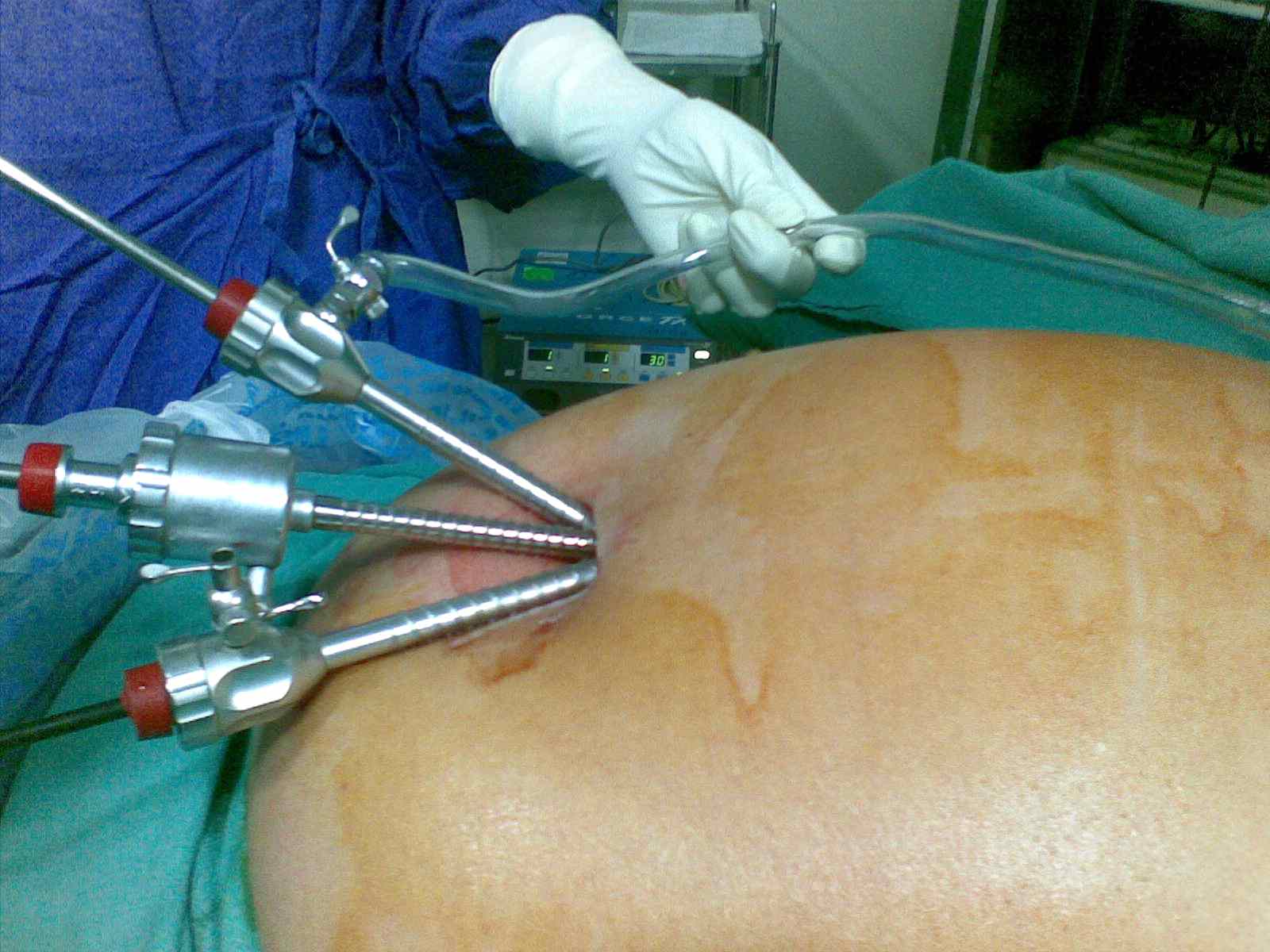WHAT’S NEW IN LAPAROSCOPY AND MINIMAL ACCESS SURGERY
Dr Arun Prasad MS,FRCS, Senior Consultant Surgeon, Apollo Hospital, New Delhi
The list of procedures that can be done laparoscopically, thoracoscopically (VATS) or endoscopically is ever expanding. The following is a list of advanced procedures that are being done now using minimal access techniques leading to shorter hospitalization, faster recovery with minimization of pain and discomfort.
|
Abdomen
nEsophagectomy
nAchalasia
Cardia
nHiatus
Hernia
nIntestinal
resection
nMesenteric
nodes
nAppendicectomy
nHernia
Repair
nGall
Bladder
nSplenectomy
nSympathectomy
nSpinal
surgery
nRectal
prolapse
nPiles
n
|
Urology
nNephrectomy
nAdrenalectomy
nStone
disease
nProstate
nVaricocele
n
n
Axilla &Breast
nAxilloscopy
nSubcutaneous
Mastectomy
|
nChest
nMediastinoscopy
nThymus
nPericardial
window
nHilar/
Mediastinal Node
nPleural
lesions
nLung
biopsy
nLung
resections
nEmpyema
nEffusions
nSympathectomy
(ETS)
|
Neck
nThyroid
nParathyroid
nThymus
n Spine
nAbscess
drainage
nDiscectomy
nBiopsy
nScoliosis
n
|
Gynaecology
nOvaries
nUterus
nInfertility
nEctopic
n
Vascular
nAortic
stents
nVaricose
veins
Robotics |
As the demands of the surgeons to the industry increases, the latter is trying to respond by giving tools that are more and more minimally invasive.
HOW IS THIS DIFFERENT FROM CONVENTIONAL LAPAROSCOPY ?

‘Traditional’ laparoscopy required cuts of 11 mm diameter to be able to insert certain instruments like the clip applicator which is used to occlude blood vessels and ducts. Once the more advanced laparoscopic surgeons started stitching these structures by a procedure known as intracorporeal suturing, the need for the 11 mm hole diminished to 5 mm and subsequently instruments that had similar strength with just 3mm diameter arrived.
WHAT ARE THE ADVANTAGES ?
CAN ALL OPERATIONS BE DONE BY 3MM INSTRUMENTS ?
The answer is no. At times thick walled gall bladders cannot be properly grasped by these fine instruments necessitating the change over to 5 mm instruments. Rarely as is true with traditional laparoscopic surgery, unforeseen circumstances (1-2% cases), may require conversion to open surgery. No surgeon can ever give an undertaking contrary to this.
SINGLE INCISION LAPAROSCOPIC SURGERY ( SILS, SPA, LEAP ETC )
 The other advancement is Single Incision Laparoscopic Surgery. Click here for details on SILS.This is going to be the technique of 21st century. While gall bladder and appendix operations can be done with the same equipment ( hence cost remains the same ), advanced laparoscopic surgery like weight loss bariatric surgery would need special instruments.
The other advancement is Single Incision Laparoscopic Surgery. Click here for details on SILS.This is going to be the technique of 21st century. While gall bladder and appendix operations can be done with the same equipment ( hence cost remains the same ), advanced laparoscopic surgery like weight loss bariatric surgery would need special instruments.
SILS is also known as Single port access (SPA) surgery, laparo endoscopic single-site surgery (LESS) or one port umbilical surgery (OPUS) or single port incisionless conventional equipment-utilizing surgery (SPICES) or natural orifice transumbilical surgery (NOTUS), or Embryonic Natural Orifice transumbilical surgery (E-NOTES) is an advanced minimally invasive surgical procedure in which the surgeon operates almost exclusively through a single entry point, typically the patient’s navel. Since the entire surgery is performed through the navel, it does not leave any visible scar like a traditional multi-port laparoscopic approach. Surgeons employing this technique contend that patients should benefit from less post-operative pain, less blood loss, faster recovery time, fewer complications, and better cosmetic results.
There is less pain, chances of infection is reduced to 25% as there is one cut compared to four earlier, less need of medications, and possibly early return to routine activities. It is a cosmetic delight to the younger age scar conscious population. One of my patient is a school girl who I think was the happiest of all the patients we have had. We would like to call it "Cosmetic Laparoscopy" as suggested by one of our patients. The procedure can be readily learned and performed by laparoscopic surgeons without the need for expensive or experimental equipment. Using a single portal of entry to the abdominal cavity, the umbilicus, cosmesis, and scar reduction is achieved.
Click here to see is a brief video of the procedure.
HOW EXPENSIVE IS ALL THIS CHANGE ? WHO BEARS THE EXTRA COST ?
Change to micro laparoscopy usually means an extra investment of about 3 lakhs (Rs) for the surgeon/ institution. Also, as these instruments are more delicate, their life is short leading to constant recurrent expense.
Equipment for SILS include special ports, instruments that bend and flexible telescope. These cost extra but at a hospital where many operations are done, the extra cost can be absorbed by the volume of work.
At our center , NO extra charge is added to the bill of the patient. The same package applies to all patients.
This is the method of the new millennium.
Dr Arun Prasad is one of the few surgeons worldwide who have taken a lead to provide this service to the patients. Sooner or later all laparoscopic surgeons will adopt this technique.
The following are links to some of the sites that tell us the latest views of international experts in the field of minimal access treatment.
ADVANCES IN LAPAROSCOPIC SURGERY - AMERICAN SITE
GALL STONE SURGERY OVER THE YEARS
GALL BLADDER DISEASE - UK SITE
GALL BLADDER DISEASE - US SITE
HEMORRHOID AND PILES - UK SITE
Contact us for more information on any of the above procedures.